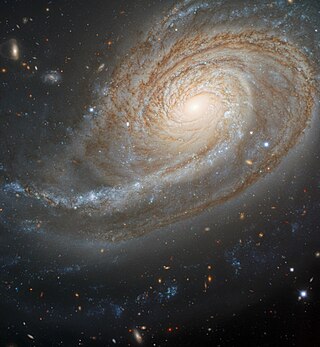Top Qs
Timeline
Chat
Perspective
NGC 772
Galaxy in the constellation Aries From Wikipedia, the free encyclopedia
Remove ads
NGC 772 (also known as Arp 78 or the Fiddlehead Galaxy[3]) is a large unbarred spiral galaxy approximately 106 million light-years away in the constellation Aries. It was discovered by German-British astronomer William Herschel on 29 November 1785.[4][5]
Remove ads
Characteristics
At around 200,000 light years in diameter, NGC 772 is somewhat larger than the Milky Way Galaxy,[6] and is surrounded by several satellite galaxies – including the dwarf elliptical, NGC 770 – whose tidal forces on the larger galaxy have likely caused the emergence of a single elongated outer spiral arm that is much more developed and stronger than the others arms. Halton Arp includes NGC 772 in his Atlas of Peculiar Galaxies as Arp 78, where it is described as a "Spiral galaxy with a small high-surface brightness companion".
NGC 772 probably has a H II nucleus, but it may be a transitional object.[7]
Remove ads
Supernovae

Three supernovae have been observed in NGC 772:
- SN 2003hl (Type II, mag. 16.5) was discovered by LOTOSS (Lick Observatory and Tenagra Observatory Supernova Searches) on 20 August 2003.[8][9]
- SN 2003iq (Type II, mag. 16.4) was discovered by Jean-Marie Llapasset on 8 October 2003.[10][11][12] This supernova was visible at the same time as SN 2003hl, which was discovered 7 weeks prior.[13]
- SN 2022qze (Type II-P, mag. 19.89) was discovered by Pan-STARRS on 8 August 2022.[14]
Remove ads
Gallery
- RGB image of the galaxy NGC 772 and dwarf galaxy NGC 770 (top center) interacting, from the Liverpool Telescope
- Center of the galaxy imaged by the Hubble Space Telescope.[15]
See also
References
External links
Wikiwand - on
Seamless Wikipedia browsing. On steroids.
Remove ads



